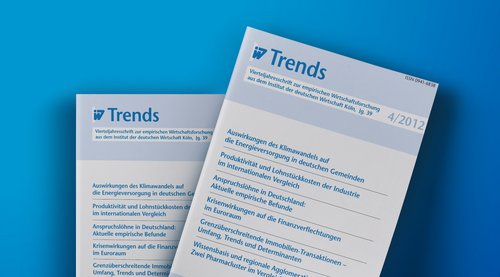In the years 2010 and 2011 the overall level of unit labour costs in manufacturing industry in Germany continued to improve significantly. However, there is still a long way to go before the level prior to the global financial and economic crisis is reached. In 2011 German unit labour costs were still almost 9 per cent higher than in 2007. The primary reason for this is the loss of productivity due to the crisis which was only made up again in 2011. Nonetheless, productivity in the German industry remains high, and on average 17 per cent ahead of the foreign competitors. However, this is not quite enough to compensate for the disadvantage of high labour costs. German unit labour costs are the seventh highest of the 27 countries surveyed. On average, other countries have a unit labour cost advantage over Germany of 8 per cent. However, Germany has at least drawn level with the European competitors.

An International Comparison of Productivity and Unit Labour Costs in Industry

More on the topic

Pharmaceutical industry: Increasing pressure on the labor market
The shortage of skilled workers poses significant challenges for pharmaceutical companies in Germany and is expected to become increasingly problematic in the context of demographic changes. Concerning Germany's positioning in the international competition ...
IW
Industrial policy at the turn of the times
The current debate on industrial policy vacillates between the extreme positions of an orthodoxy of rejecting state action and a naive belief in the state's ability to control structural change.
IW